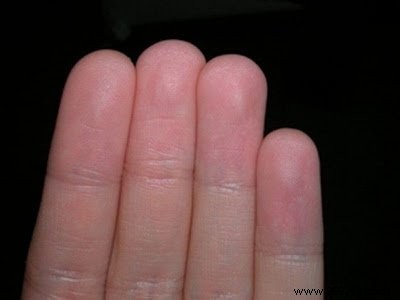In Bangladesh, about ten members of the same family have an identical characteristic. Indeed, they do not have fingerprints on the fingers of the hands and feet. The astonishing distinctive sign of this family provides an opportunity to explain a very rare congenital disease:adermatoglyphia.
Apu Sarker is a 22-year-old young man living with his family in a village in the district of Râjshâhî, in the north-west of Bangladesh. On a daily basis, he encounters certain problems. Indeed, it is difficult for him to obtain a driver's license, a passport and even a simple SIM card for his phone! Apu Sarker, on the other hand, has an identity card on which must appear his fingerprints. However, in the space reserved for the latter, it is written "no footprints" as described by the Indian daily Northeat Now on December 26, 2020.
In reality, Apu Sarker is affected by a very rare congenital disease:adermatoglyphia. However, this is manifested precisely by an absence of dermatoglyphs (the other name for fingerprints and palm prints) on the hands, but also on the feet. In addition, nine other family members are in the same situation as him.

“Isolated congenital adermatoglyphia is a rare genetic developmental disorder occurring during embryogenesis. It is characterized by the absence of epidermal ridges on the palms and soles of the feet, which leads to the absence of fingerprints, without any other manifestation. It is associated with a restriction in the number of openings of the sweat glands and hypohidrosis in the palms and soles of the feet “, according to Orphanet, the portal for rare diseases and orphan drugs.
Fingerprints usually appear between the 16th and 25th weeks of pregnancy . During this period, the skin is malleable, so the imprints depend on both genetic factors and the intrauterine environment. However, people with adermatoglyphia had an alteration in the SMARCAD1 gene , preventing the coding of the protein responsible for the development of imprints on the skin. Nevertheless, this gene being dominant, a single carrier chromosome is enough to activate the disease. This therefore explains why several members of the same family can contract it.
In a study published in the Journal of the American Academy of Dermatology in 2011, researchers identified only four affected families worldwide. You should know that the discovery of adermatoglyphia dates back to 2007 when a Swiss national encountered problems with the border authorities of the United States. Customs officers had indeed discovered an absence of fingerprints in this person, so that researchers then carried out DNA analyzes for the whole family . After this case, the scientific world began to give this disease a nickname:"immigration disease".